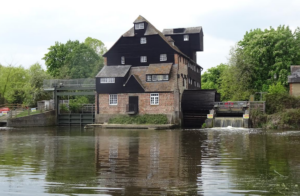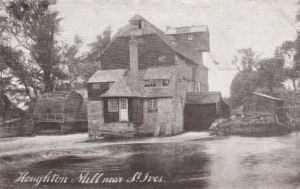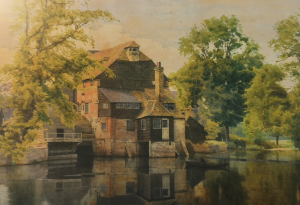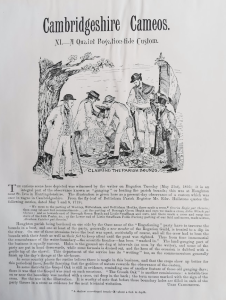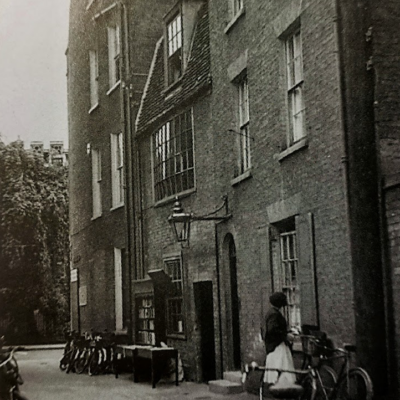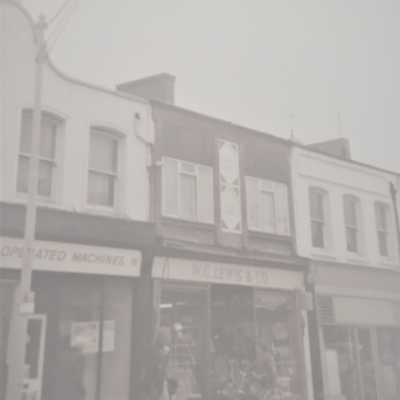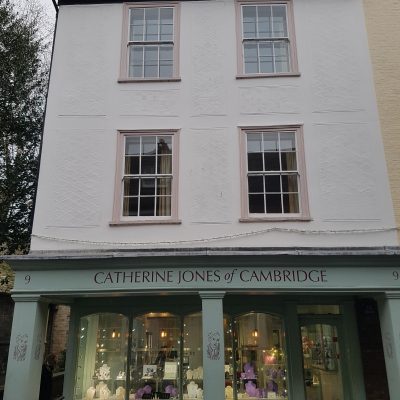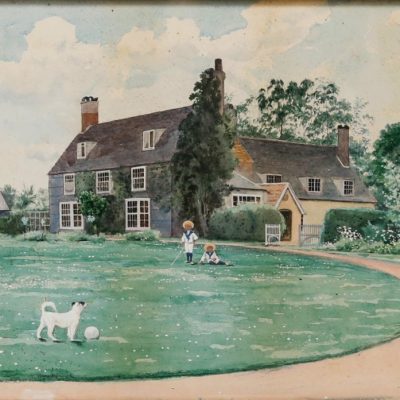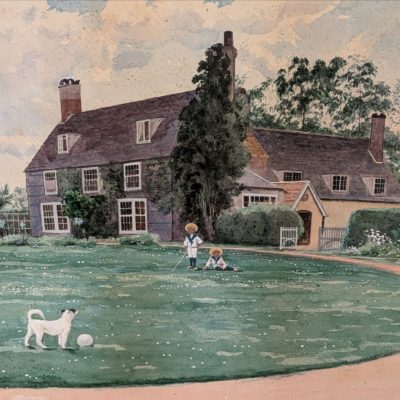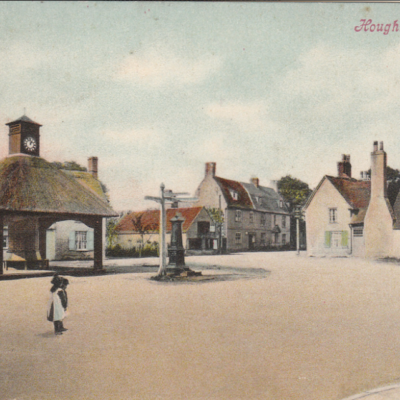Search by topic
- archaeology
- Building of Local Interest
- chapel
- charity
- church
- crime
- dressmaker
- fire
- Great Eastern Railway
- Listed building
- Mapping Relief
- medieval
- oral history
- poverty
- Public House
- Religious House
- Roman
- scholar
- school
- Then and Now
- tudor
- women
- work
- world war one
- world war two
Search by text
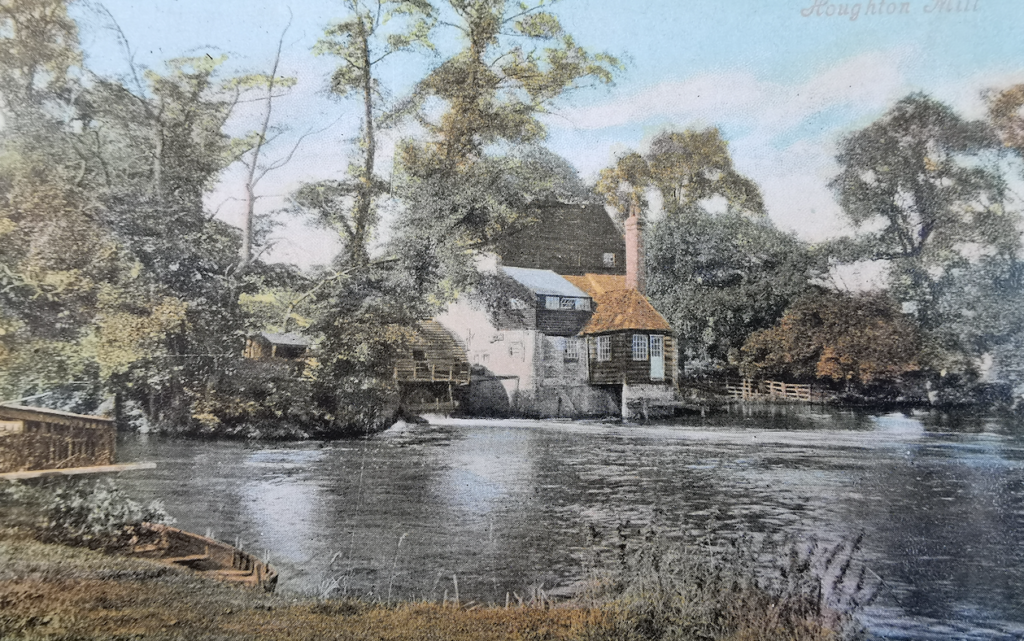 Houghton Mill
Houghton MillHoughton Mill, Houghton with Wyton
History of Houghton Mill
Located on the River Great Ouse between St Ives and Huntingdon, there has been a mill on the Ouse near Houghton since at least the year 974. The present mill is believed to have been built in the 17th century replacing one that burnt down. The mill closed in 1928 when the last miller, Arthur Chopping, retired and the water wheels were removed. Water mills were once a common sight with around 120 mills on the central 70 mile stretch of the Ouse. At its height, the mill ran ten separate pairs of grinding stones, with the power supplied by three wheels.
Then and Now
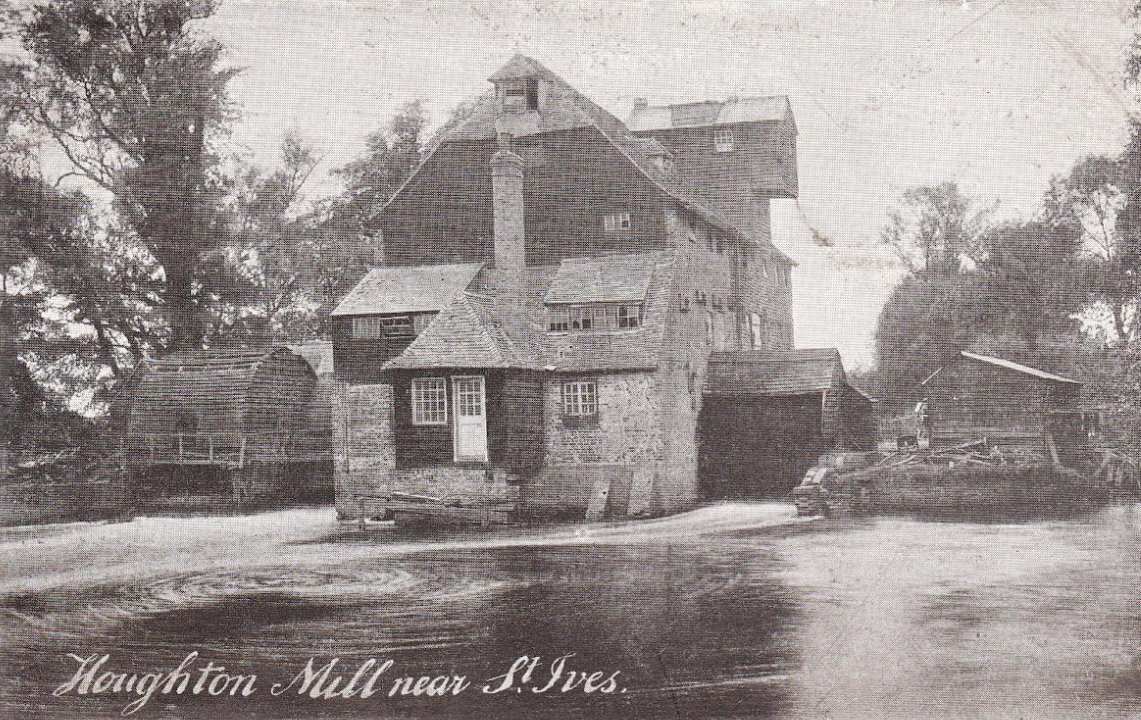
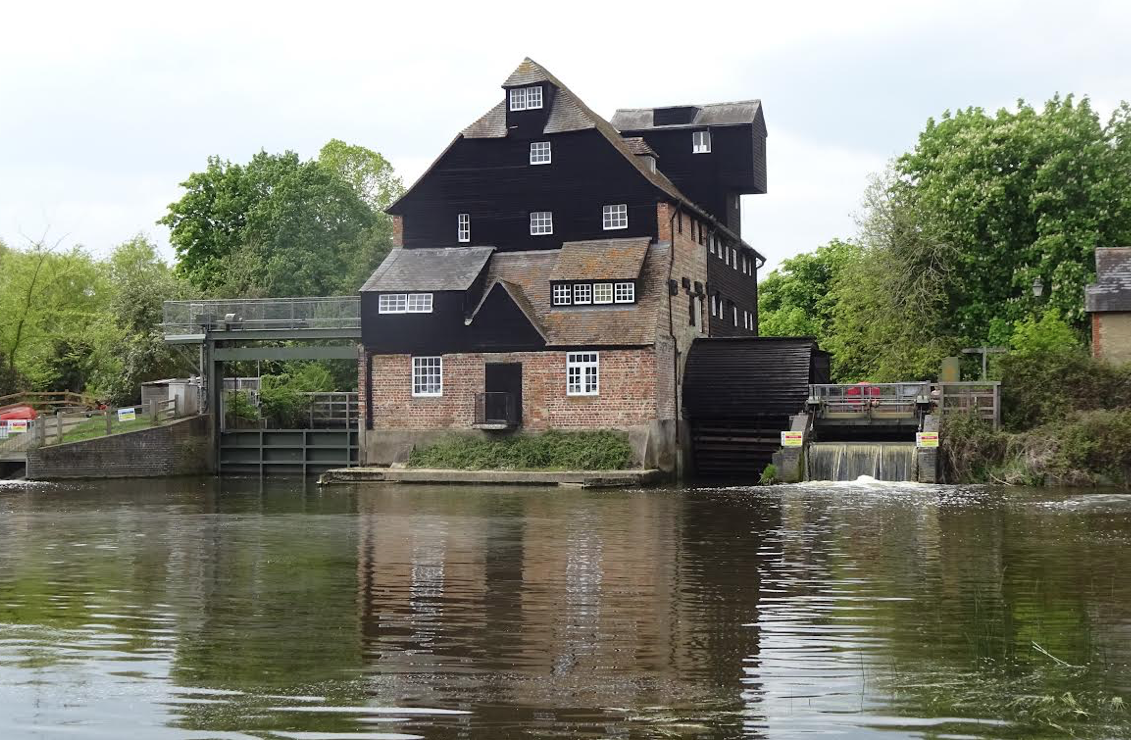
It is known that in 969 the Ealdorman Aylwin collaborated with St Oswald to found the abbey of Ramsey, ten miles north of Houghton. A contemporary chronicler recorded that in 974 Aylwin purchased a meadow and mill at Houghton and gave them to the abbey as part of its endowment.
In 1086, in the Domesday Book, the mill is recorded as being worth 20s. Also recorded was another mill at Wyton worth 12s.
By about 1135 its value had risen to about 100s. Perhaps the mill had been modernised with for instance a vertical water-wheel. All tenants on the Ramsey Abbey estates would have been bound to use the mill under pain of a heavy fine.
Disputes could happen. In 1500 the abbot instituted a law-suit against the village after damage to the mill. The abbot had instructed workmen to divert the river to improve the flow to the mill and this had flooded arable fields of the villagers and damaged their crops. The villagers in revenge destroyed the floodgates of the mill. The abbot won his case and the villagers had to repair the damage and apologise at Ramsey.
In 1515 a dispute with the abbot was won by the people of Godmanchester over their right to control the river in flood time.
In 1539 the Ramsey Abbey estate passed to the Cromwell family but the manor of Houghton-cum-Wyton including the mill stayed with the Crown. It was sold by Charles I in 1625.
The Manchester family of Kimbolton became owners and they passed it on the Robert Bernard of Brampton in 1651. It then became part of the Brampton Park Estate, descending to Lady Olivia Bernard Sparrow early in the 19th century.
In 1797 William Brown, a Quaker, of Earith came to Houghton to manage the mill for the firm of Stafford, Pasheller and Lindsell. A few years later, although the firm gave up the business, Brown went into partnership with a Thomas Jeeks. They became tenants, renting it from Lady Sparrow. Brown carried on at the mill until his retirement in 1822.
His eldest son Potto took over the lease in partnership with Joseph Goodman, a prominent local nonconformist. Potto carried on until 1852. In that year a new lease with sign by Potto and his two sons, Bateman and George William. The lease then was £362 6s for the first year and £320 per year afterwards.
In 1862 Potto retired from milling and made over the business to his two sons and henry Goodman. He died in 1871 and was buried in the graveyard of Houghton Chapel. Potto had become known locally as ‘the village philanthropist.’
One of Potto’s sons, Bateman, carried on the business until he retired in 1876, living in Hemingford House, then, in 1896, at Bridge House, Huntingdon, later the Old Bridge Hotel.
In 1898 a John Belton was tenant. The through the efforts of Lt Col Louis Tebbutt and local inhabitants it was bought and given to the National Trust in 1939.
From 1935 to 1982 it was home to a youth hostel, one of the few where smoking was banned due to the fire risk. The year after the youth hostel closed, the National Trust opened the building to the public. In 1999 a set of the original mill stones were restored and once again flour is being milled on the site.
First picture is an undated postcard, but is prior to 1928 as that is when the wheels were removed.
(Thanks to David Gent)
Contribute
Do you have any information about the people or places in this article? If so, then please let us know using the Contact page or by emailing capturingcambridge@
License
This work is licensed under CC BY-NC-SA 4.0





